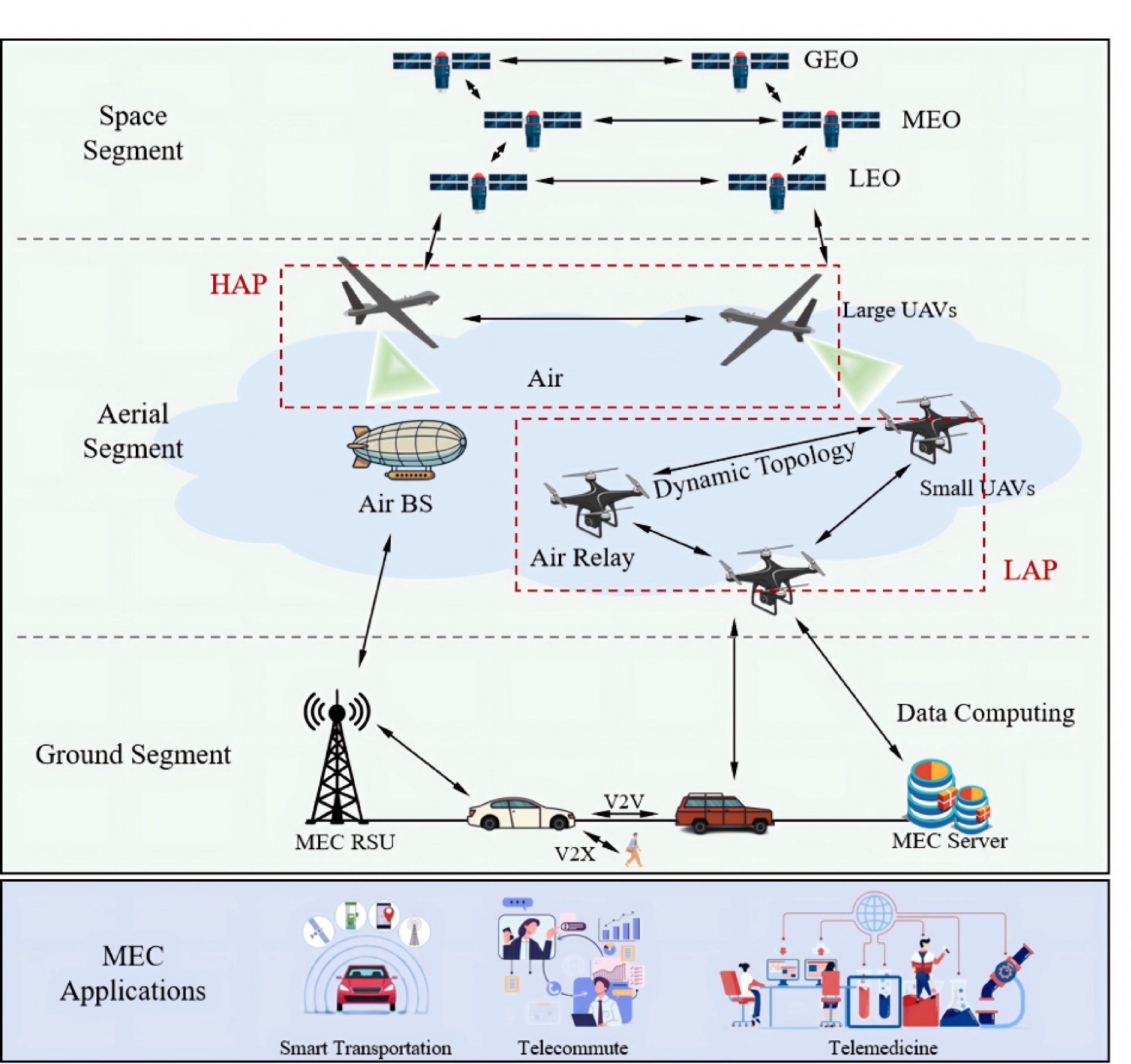The Application of Mobile Edge Computing in the Space-Air-Ground Integrated Network
DOI:
https://doi.org/10.64509/jicn.11.13Keywords:
SAGIN; MEC; computing service; 6G; internet of thingsAbstract
The rapid evolution of next-generation communication technologies has made the integration of Multi-access Edge Computing (MEC) into Space-Air-Ground Integrated Networks (SAGIN) a critical research frontier. This integration offers global seamless coverage, ultra-low latency, enhanced reliability, and optimized use of computational and communication resources. This paper systematically investigates the fundamental principles, technological architectures, and recent advancements of MEC-enabled SAGIN, with particular emphasis on computation offloading methodologies, resource allocation and management strategies, network architecture optimization, and communication protocol standardization. Critical application scenarios—including intelligent transportation and autonomous driving, emergency communications and disaster mitigation, telemedicine and remote education, as well as aerial and maritime mobile services—are analyzed to illustrate the transformative potential of integrated MEC–SAGIN frameworks. Concurrently, this study examines key technical challenges arising from heterogeneous dynamic network conditions, constrained resources, computational offloading complexities, security threats, and privacy concerns. To overcome these challenges, future research directions are proposed, highlighting the integration of advanced technologies such as digital twins for precise network modeling and optimization, artificial intelligence for intelligent resource orchestration, blockchain for secure and transparent resource sharing, and quantum computing and communication for enhanced network security and performance. This comprehensive survey provides a foundational reference for theoretical advancement and practical deployment of MEC-integrated SAGIN systems, facilitating the evolution toward intelligent, efficient, and globally interconnected communication infrastructures.
Downloads

Downloads
Published
Issue
Section
License
Copyright (c) 2025 Authors

This work is licensed under a Creative Commons Attribution 4.0 International License.



